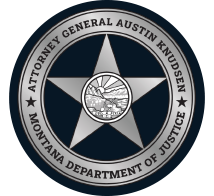“The Department of Justice will continue to represent the legislature as it carries out its necessary investigation of potential judicial misconduct. The Supreme Court justices must also act to restore the public’s confidence. Fully cooperating with the investigation instead of taking extraordinary measures to hide public documents would be good place for them to start.”
– Attorney General Austin Knudsen
Background Information
What has been happening behind closed doors at the Supreme Court is ugly: Violations of our judicial codes of conduct, potential violations of the law, and a pattern of corruption. The Supreme Court justices and staff are scrambling to cover this up. The first step toward cleaning up our legal and judicial culture is more transparency and less of the self-policing that has enabled the current system to spiral out of control.
-
- The Supreme Court Justices still have not produced subpoenaed documents. The judges’ statements to the Special Joint Select Committee on Judicial Transparency and Accountability did not answer the underlying questions.
-
- The rationale for refusing to answer questions – active litigation – was entirely self-concocted when the Justices improperly put that case before themselves, seeking to act as their own referees without any independent oversight.
-
- The Supreme Court has twice ordered to quash legislative subpoenas targeting communications that demonstrated wrongdoing by the court and its own hand-picked court administrator. In one, the Court admitted no one in the order was also party to the case and it might not have jurisdiction in that matter.
-
- While claiming to be impartial, Montana judges regularly—often—comment extensively on pending legislation in public emails, showing bias and prejudgment on issues that can and do end up before them in lawsuits. They actively discuss trying to stop legislation aimed at bringing more public transparency to the judicial branch.
-
- Judge Krueger was appointed to a case to decide the constitutionality of a law he had told all his colleagues he adamantly opposed. Despite knowing about this opposition those colleagues did not disclose his improper comments or oppose his appointment.
-
- After Judge Kruger’s improper comment became public and he recused himself, Chief Justice McGrath indicated the case would probably be heard by six justice because nearly all the district court judges had prejudged the law in question as Judge Krueger had – a fact he knew before appointing him. Article VII, § 3(2) of the Montana Constitution clearly says a replacement must be seated to replace a recused justice.
-
- Almost immediately after learning that the state was moving to disqualify Judge Krueger, the Chief Justice called and spoke with him. Additionally, the challengers’ attorneys attempted to contact the recused Chief Justice ex parte within minutes. It is clear that the Chief Justice is still actively involved in the case challenging SB140 even though he recused himself. His comments Monday to the select committee with other justices listening were also improper.
-
- Judges and their staff violated their own record retention policies, admittedly deleting emails showing these illicit communications and therefore depriving the public of knowing which judges took positions on bills that may or already have come before them.
